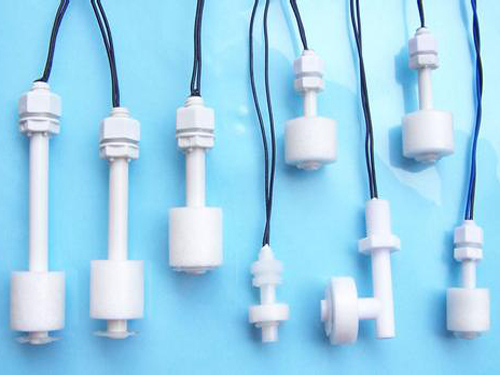Level controller controls frequency converter operating frequency

First, the control principle Most general-purpose frequency converters can finish different conditions and work at different frequencies. This is called multistep frequency operation in Fujitsu 5000G11S/P11S series inverters, and it is called constant speed operation in ABBACS510-01 series inverters. The liquid level controller is to let the pump select different speeds according to the level of the liquid, so that the work of the pump ends microscopically. As shown in the figure below, the controller uses two azimuth probes to divide the pump pool into three liquid level areas. When the liquid does not touch the lower level probe, the frequency converter operates in the lowest frequency area; when the liquid level When in the middle of the two probes, the inverter works in the middle frequency area. When the liquid level touches both probes, the inverter is in the high frequency area.
The liquid level controller is mainly composed of a liquid level sensing circuit (some weak currents) and a delay control circuit f strong). The level sensing circuit is shown above, with a 6-inverter CD4069 in between. This circuit has two azimuth detection, only two inverters are used. The medium between the liquid level probe and the ground is not the same, its resistance value is also different, and the input bias of the inverter is changed along with the output. The potential is not the same, and then control the corresponding relay.
When the medium is a pulp or other liquid, the input of the inverter is low, and the output is high, and the relay is driven by the transistor S9013; when the medium is air, the input is high, the output is low, and the relay does not operate. (4069 total 6 inverting gates, the input terminal of the unused gates must be grounded, because the detection circuit is long, the gate l, the input of the gate 2 is 200kΩ in series is very important, it can not be omitted). The controller can be expanded to multiple channels as needed. It should be noted that the upper level relay K of the controller uses a normally open contact and the lower level relay K uses a normally closed contact. The relay type is JZC-23F/DC12V. Delay control circuit schematic shown below. Some SJ1 and SJ2 are JS14P/220V 1~99s adjustable time relays, which are used to prevent the frequency converter from vibrating at the junction of the two liquid levels. When the change of the liquid level is detected, the new situation must be persisted for a period of time. The amount of this time can be artificially set according to the site conditions. J1 and J2 are small 220V AC relays.
Second, equipment debugging Some liquid level perception is done on a suitable experimental circuit board, and into an empty time relay (type JS14P), mainly using its 8-pin male and female. The connection of the 8 feet is J1~J8 in the figure above, J1 and J2 are connected to 220 AC power, J3 is connected to the ground of the pump pool, J4 is connected to the liquid level probe, J5 is connected to the liquid level probe, and J6 is connected to the relay output common line. , J7 connected to the level relay output (with open contact), J8 connected to the level relay output (with normally closed contacts).
Connect some of the power lines as shown below and place them in a suitable distribution box. The liquid level probe is best made of stainless steel, and the wiring should be robust and reliable. The stainless steel pipe should be covered with PVC pipe. The local contact with the fixed bracket must be reinforced with cable skin. The local equipment should adhere to monotony, and the bracket should be higher than The overflow liquid level is 30-40 cm. Take the Fuji 5000G11S/P11S series inverter as an example to explain how the liquid level controller is connected to the inverter and set the inverter. The connection between the liquid level controller and the frequency converter is as shown in the figure on the right. K is a double changeover switch. It is connected to the left two connections and it is the liquid level control. When turning to the right two connections, it is the manual adjustment control. In the case of liquid level control, the manual potentiometer cannot schedule the frequency converter; when manually adjusting the control, the liquid level control does not work. J1-2, J2-2 is a pair of normally closed contacts of J1, J2 in the following figure. Xl, X2, CM are the terminals of the inverter. Enter the parameter adjustment of the inverter, and adjust the parameter E01 to 0, E02 to 1, E03 to 2, C05 to 26 (lower level frequency), C06 to 34 (upper level frequency), and C07 to 30 (middle level frequency) For details, please refer to the corresponding inverter operating instructions. It should be noted that regarding the Fuji inverter, the common terminal CM is the common ground in the inverter. Regarding the ABB inverter, the common terminal CM is connected to the positive 24V power supply in the inverter. After adjusting, you can use the liquid level to control the pump speed.
Kitchenware Parts,Kitchenware Accessories,Zinc Die Casting Water Fitting,Aluminum Die Casting Fitting
Ningbo Jinyao Machinery Company. LTD , https://www.cardiecastingmold.com